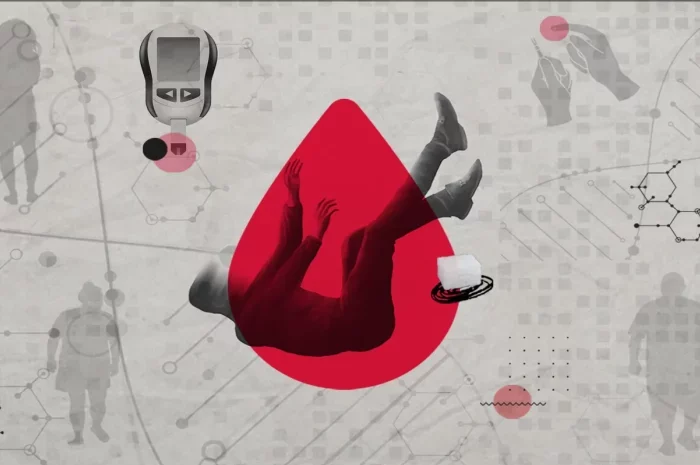Type 1 diabetes is a chronic condition characterized by the body’s inability to produce insulin. Insulin is a hormone crucial for regulating blood sugar (glucose) levels. Managing type 1 diabetes involves a combination of lifestyle modifications, such as diet and exercise, along with medication. While insulin therapy remains the cornerstone of treatment for type 1 diabetes, there are various types of insulin and other medications available to help individuals manage their condition effectively.
Insulin Therapy: Foundation of Type 1 Diabetes Management
Insulin therapy is indispensable in type 1 diabetes management as it replaces the insulin that the body is unable to produce. There are several types of insulin, classified based on their onset, peak action, and duration of effect. These include:
1. Rapid-acting insulin: Begins to work within 15 minutes after injection, peaks in about 1 hour, and lasts for 2 to 4 hours. Examples include insulin lispro (Humalog), insulin aspart (NovoLog), and insulin glulisine (Apidra).
2. Short-acting insulin: Starts working within 30 minutes after injection, peaks in 2 to 3 hours, and lasts for 3 to 6 hours. Regular insulin (Humulin R, Novolin R) falls into this category.
3. Intermediate-acting insulin: Takes about 2 to 4 hours to start working, peaks in 4 to 12 hours, and lasts for 12 to 18 hours. NPH insulin (Humulin N, Novolin N) is an example.
4. Long-acting insulin: Begins to work several hours after injection and lasts for about 24 hours. Examples include insulin glargine (Lantus), insulin detemir (Levemir), and insulin degludec (Tresiba).
Multiple Daily Injections vs. Insulin Pump Therapy
People with type 1 diabetes typically administer insulin through multiple daily injections (MDI) or insulin pump therapy. MDI involves injecting insulin using a syringe, pen, or insulin pump multiple times a day, mimicking the body’s natural insulin release pattern. On the other hand, insulin pump therapy involves wearing a small device that continuously delivers insulin into the body, with the wearer manually administering additional doses as needed, particularly at mealtimes.
Both approaches have their advantages and drawbacks, and the choice between them often depends on individual preferences, lifestyle, and management goals. Some individuals find the flexibility and precision of insulin pumps more convenient, while others prefer the simplicity of MDI.
Adjunctive Medications for Type 1 Diabetes Management
In addition to insulin therapy, certain adjunctive medications may be prescribed to help manage type 1 diabetes more effectively. These medications are typically used in conjunction with insulin and can offer additional benefits in terms of blood sugar control, weight management, and reducing the risk of complications. Some common adjunctive medications for type 1 diabetes include:
1. Metformin: Although primarily used to treat type 2 diabetes, metformin may be prescribed off-label for individuals with type 1 diabetes, especially those who are overweight or insulin-resistant. Metformin works by reducing glucose production in the liver and improving insulin sensitivity in peripheral tissues.
2. SGLT2 inhibitors: Sodium-glucose cotransporter 2 (SGLT2) inhibitors, such as empagliflozin (Jardiance) and dapagliflozin (Farxiga), are a newer class of medications approved for type 2 diabetes. They work by inhibiting glucose reabsorption in the kidneys, leading to increased urinary glucose excretion and lowering blood sugar levels. While not approved as a standalone treatment for type 1 diabetes, SGLT2 inhibitors may be prescribed off-label in conjunction with insulin therapy to improve glycemic control and reduce insulin doses.
3. GLP-1 receptor agonists: Glucagon-like peptide-1 (GLP-1) receptor agonists, such as liraglutide (Victoza) and exenatide (Byetta), are another class of medications primarily used in type 2 diabetes management. They stimulate insulin secretion, suppress glucagon secretion, and delay gastric emptying, resulting in lower blood sugar levels. Like SGLT2 inhibitors, GLP-1 receptor agonists may be used off-label in combination with insulin therapy for select individuals with type 1 diabetes, particularly those struggling with weight management and glycemic control.
4. Pramlintide: Pramlintide (Symlin) is a synthetic analog of amylin, a hormone co-secreted with insulin by the pancreas. It works by slowing gastric emptying, reducing postprandial glucagon secretion, and promoting satiety, thereby helping to regulate blood sugar levels. Pramlintide is typically used as an adjunctive therapy in individuals with type 1 diabetes who have difficulty achieving glycemic targets despite optimized insulin therapy.
Conclusion
Type 1 diabetes management requires a comprehensive approach that includes insulin therapy, lifestyle modifications, and, in some cases, adjunctive medications. While insulin remains the cornerstone of treatment, adjunctive medications such as metformin, SGLT2 inhibitors, GLP-1 receptor agonists, and pramlintide may be used in combination with insulin to improve glycemic control, reduce insulin doses, and mitigate the risk of complications. The choice of medication regimen depends on individual factors such as age, comorbidities, lifestyle, and treatment goals, and should be tailored to each person’s specific needs under the guidance of a healthcare professional. By employing a personalized treatment approach, individuals with type 1 diabetes can effectively manage their condition and lead healthy, fulfilling lives.























